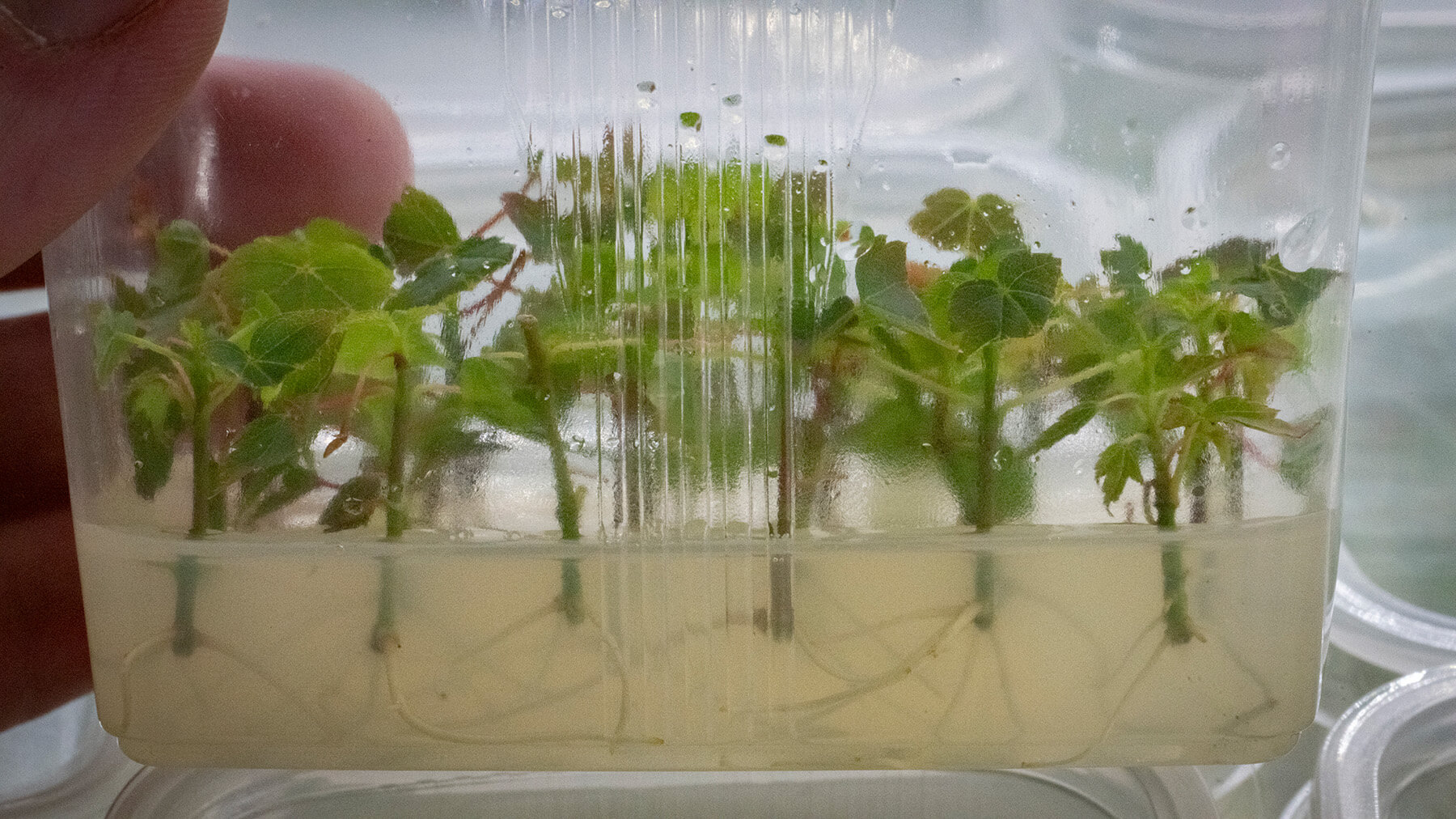
Bringing Better Acers to Market: Spotlight on Tissue Culture
At Bailey Nurseries, we’re always seeking better, smarter, and more sustainable ways to deliver exceptional plants to our customers. One exciting example of this is how we’re growing Acer varieties using tissue culture. This method brings measurable improvements in plant quality, consistency, and proficiency, especially for species that have challenges with traditional propagation methods. Here’s how this innovative approach is reshaping the way we grow.
Why Tissue Culture?
The use of tissue culture in Acer propagation ensures every tree we grow behaves the same. This level of consistency gives growers and nursery workers a reliable, uniform liner.
One of the most noticeable improvements? The elimination of the kink at the base of the trunk, also referred to as a “dog leg,” which is common in plants propagated by softwood cuttings. Tissue culture-grown Acers have closer internode spacing, allowing us to cut lower and establish a cleaner, more attractive trunk. The result is a seamless, high-quality tree that maintains its aesthetic value from root to tip.
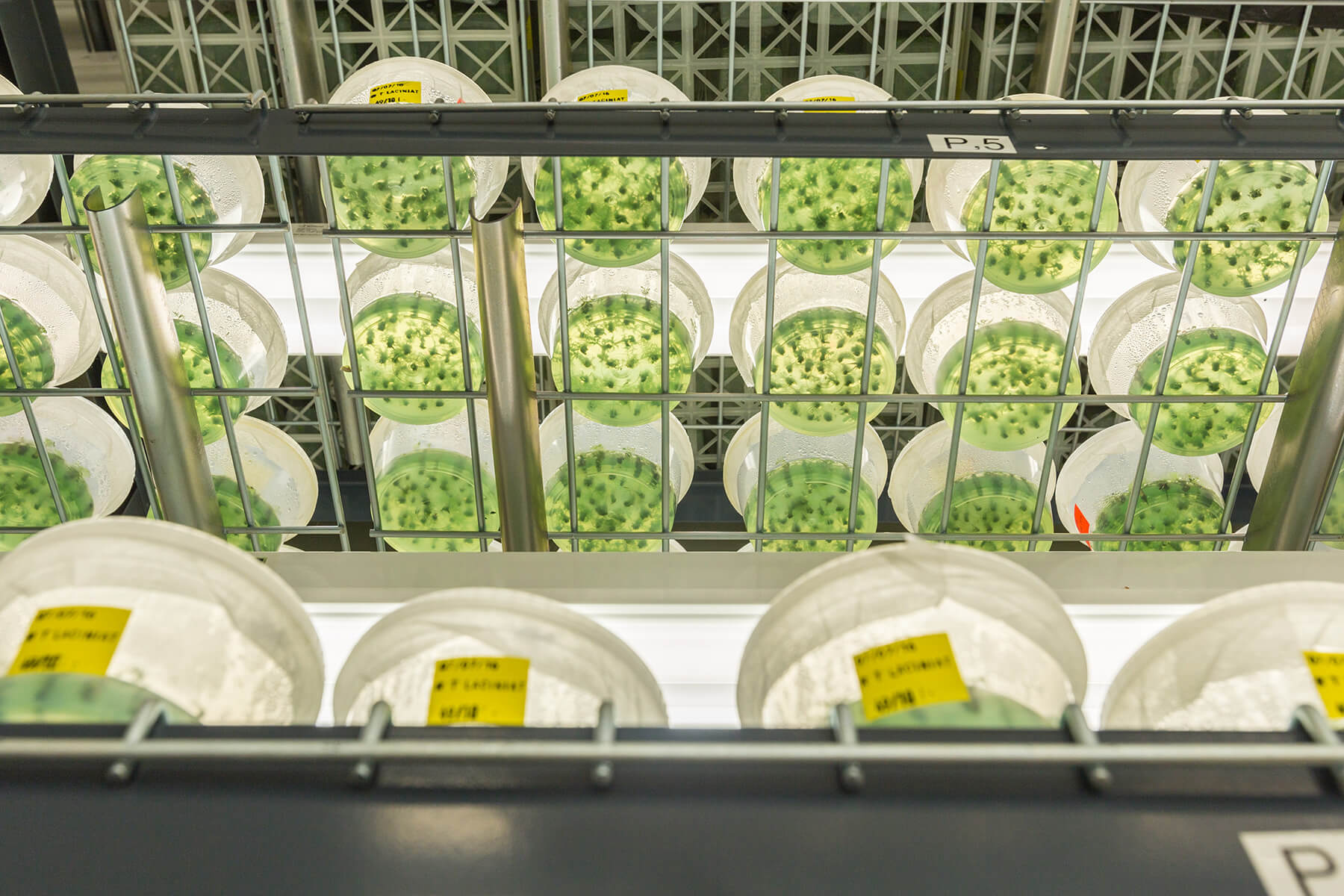
Labor Efficiencies and Faster Growth
Tissue culture not only elevates plant quality, it also streamlines production. When using methods like softwood cuttings, we can easily get them to root but we don’t see the same quality and consistency as we do in the lab. By initiating propagation in the lab, we’re able to propagate in March and April, long before traditional softwood cutting schedules begin. This early start alleviates the seasonal labor challenges faced by our propagation crews as workloads fluctuate throughout the season.
Additionally, tissue culture trees benefit from enhanced juvenility, meaning they grow faster and stronger than conventionally propagated counterparts. The uniformity of node production also results in fewer losses in the field. More nodes mean more chances for recovery if one is damaged or lost.
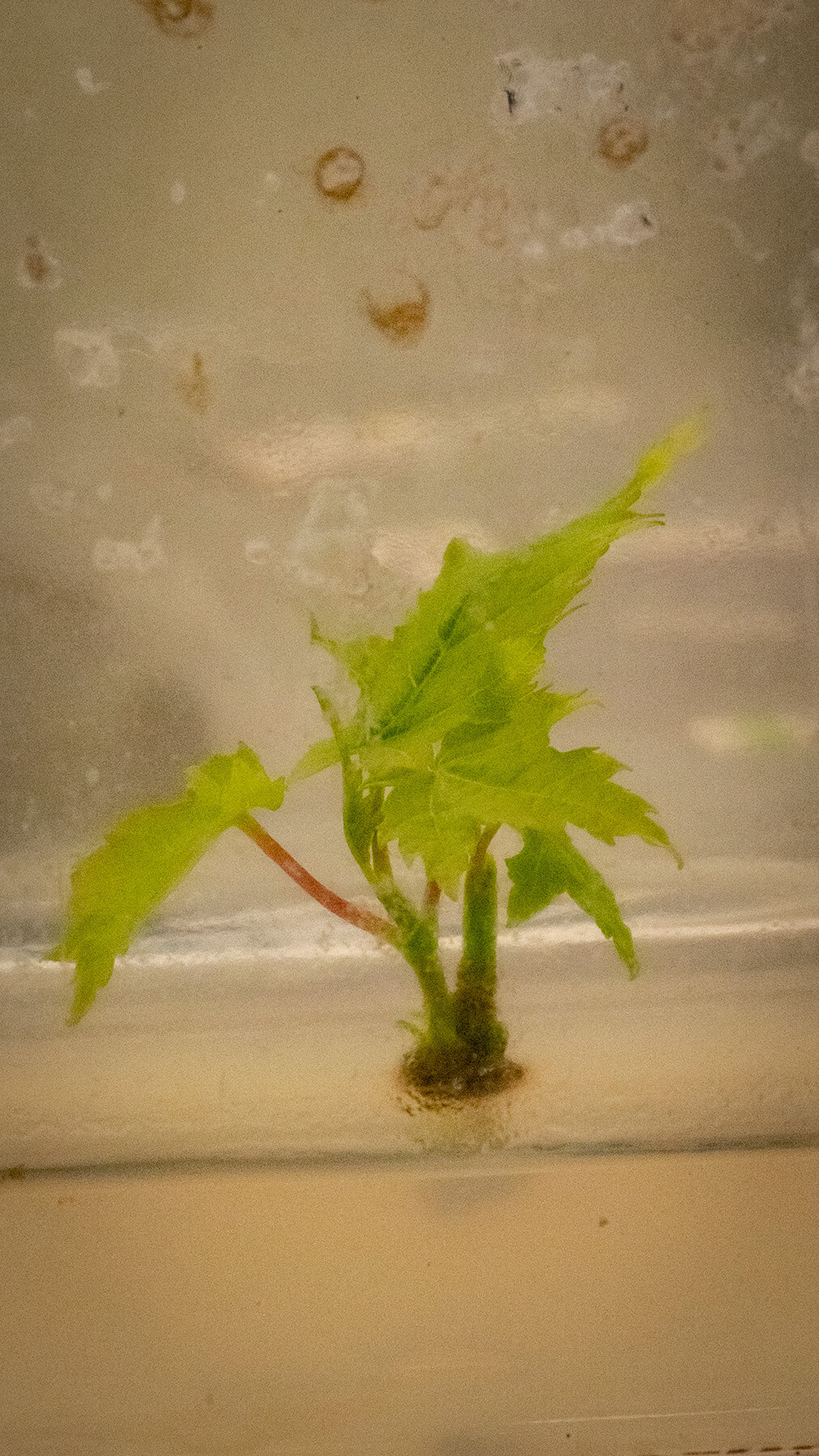
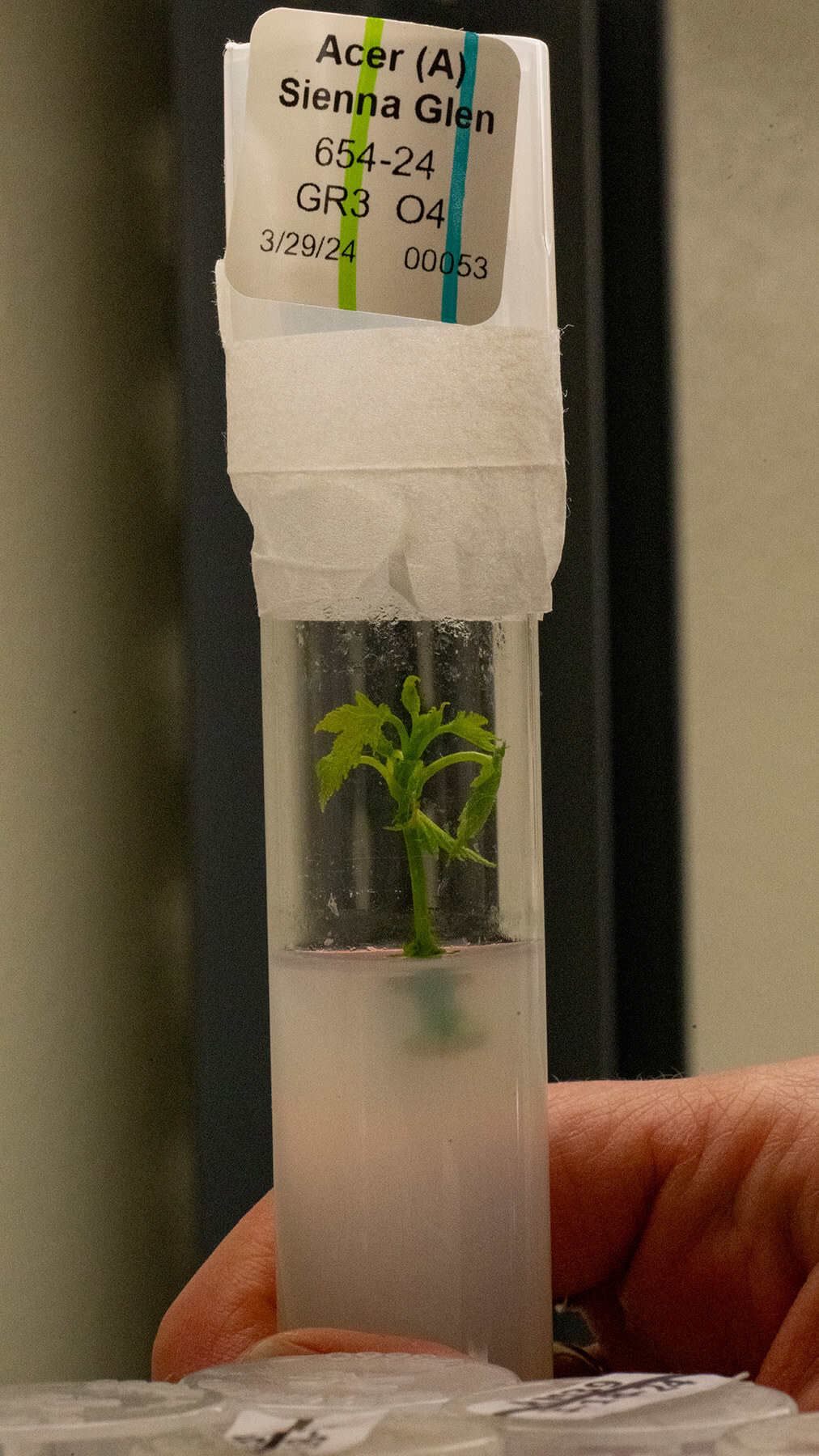
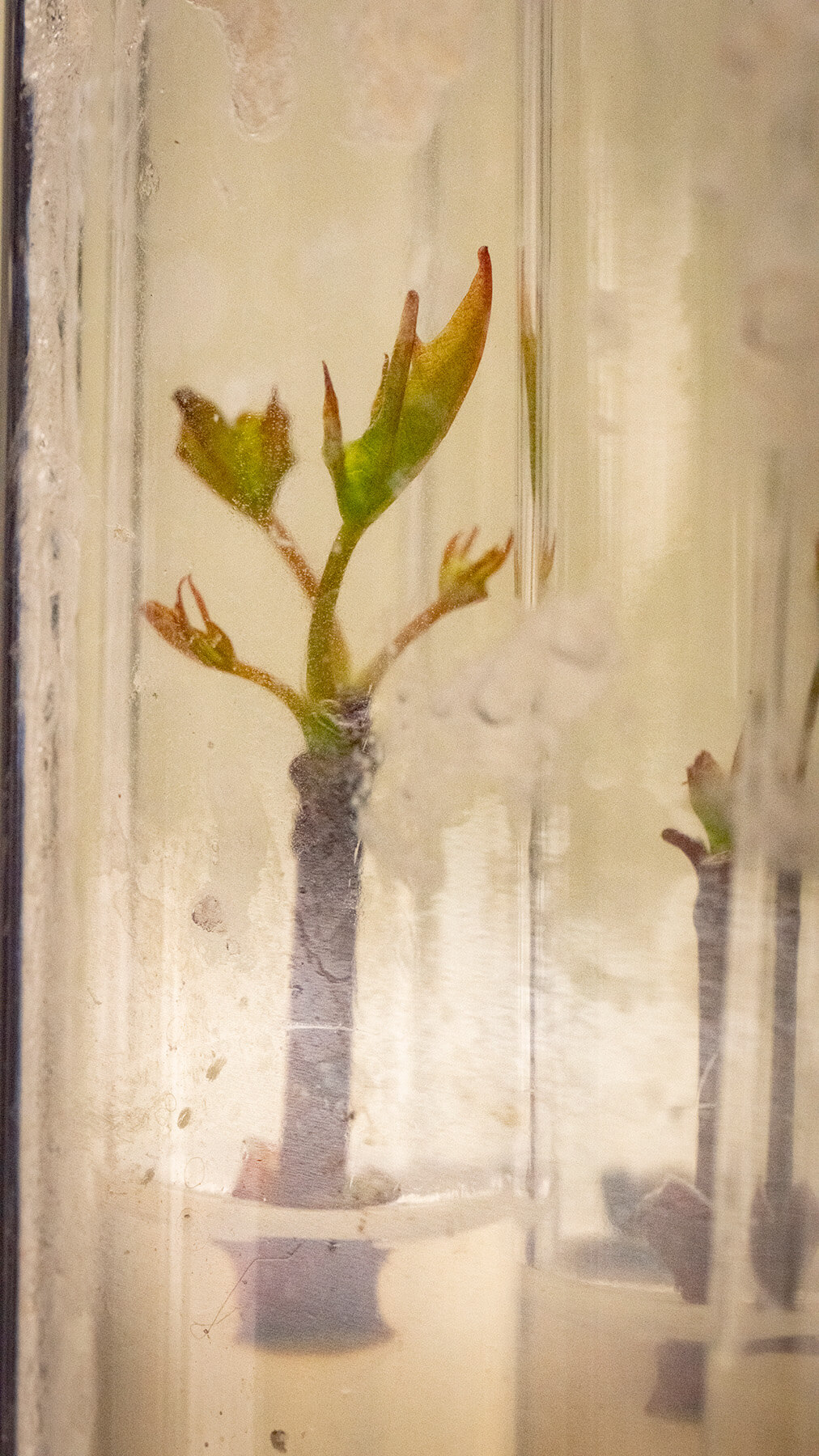
What This Means for You
Whether you’re a grower, retailer, or landscaper, you’ll appreciate the upgrades that tissue culture brings to our Acers:
- Superior structure for landscape-ready trees
- Increased vigor and faster time to market
- Reduced variability in performance
- More efficient supply chain with earlier availability
While tissue culture does not alter a plant’s disease resistance or significantly impact sustainability inputs, its operational advantages and quality improvements are prompting a growing shift in demand, especially for Acers. That’s why improved selections like Matador™ and others are increasingly the choice for growers.
Looking Ahead
Our commitment to continual improvement drives our adoption of tools like tissue culture. By optimizing how we propagate Acers, we deliver cleaner, more consistent liners that reflect the future of quality nursery production.